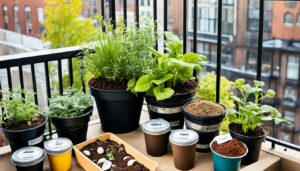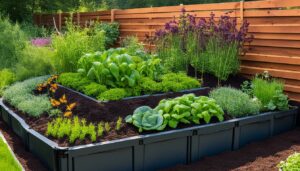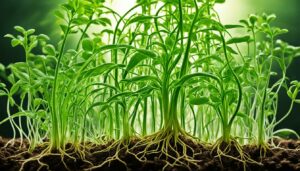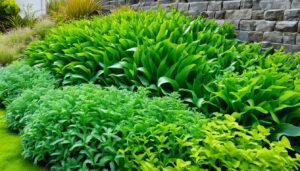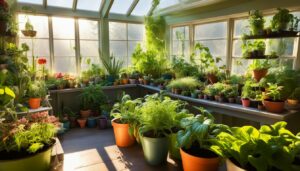An astounding 75% of the Earth’s population once practiced some form of agriculture guided by the lunar calendar, a ritual deeply woven into the fabric of farming traditions. Today, it’s called Moon Gardening—a practice where planting lunar phases may just be the secret ingredient to a more abundant harvest. Melding the rich knowledge of lunar gardening tips and modern horticulture, this ancient technique empowers modern-day green thumbs to potentially enhance their yield by syncing their garden planning with the moon.
Moon gardening or lunar gardening finds its roots in the mists of time, marrying botanical prowess with the moon’s mystic ebb and flow. Despite the age of technological advancements and scientific skepticism, a global community of gardeners embraces this practice as a way to enrich their earthly connection, abiding by a cosmic timetable that has intrigued humans for centuries. Peering into the subtle influence of the moon’s phases, gardeners attempt to optimize their labor, hoping that a little celestial magic will bring growth and vitality to their earthly endeavors.
Key Takeaways
- Moon Gardening is a practice rooted in ancient tradition, enhancing plant growth by coordinating with the moon’s phases.
- Engaging in lunar gardening tips can introduce a ritualistic and holistic aspect to your gardening routine.
- Garden planning with the moon incorporates the celestial rhythm into agriculture, potentially affecting plant development and yield.
- Despite a lack of broad scientific evidence, there is a strong community of gardeners who advocate for the benefits of planting lunar phases.
- Moon gardening can serve as a sustainable practice that deepens the gardener’s connection to the natural world through attentive celestial observation.
Unraveling the Influence of the Lunar Cycle on Gardening
The intricate dance of the moon’s phases has long been associated with the growth and vitality of plant life. From the deep-rooted traditions of ancient agriculture to the backyards of modern green thumbs, lunar cycle gardening has emerged as a fascinating aspect of horticulture. It is a practice interwoven with the rhythms of nature, tapping into the potential effects that the moon’s gravitational forces and light patterns might have on gardening by moon phases.
Understanding the Lunar Cycle
Seen from Earth, the lunar cycle illustrates a monthly progression through several distinct phases. Each of these stages is said to hold particular significance for gardeners seeking to optimize their lunar planting schedule. The cycle kicks off with the New Moon and spirals through a sequence of growth culminating in the luminous Full Moon before winding down back to the inception point.
Effects of Lunar Gravity on Plant Life
According to proponents of gardening by moon phases, lunar gravity plays a pivotal role in the ebbs and flows of plant sap and soil moisture. During the Waxing Moon, as the visible portion of the moon grows in the sky, it’s theorized that an increase in gravitational pull could encourage sap to rise, favoring leafy growth. Conversely, the Waning Moon is thought to promote root development as the force wanes and energy draws downwards.
Growth Patterns by Moonlight: Myths or Mechanics?
While scientific consensus remains elusive, there’s no denying the moon’s powerful control over the tides, which has led many to ponder its potential influence over the subtle biological processes within plants. This intersection between legend and logic is where lunar cycle gardening cultivates its most devoted followers and curious skeptics alike, navigating through a blend of observable patterns and intriguing lore.
| Moon Phase | Planting Focus | Believed Influence on Plants |
|---|---|---|
| New Moon to First Quarter (Waxing Crescent) | Foliage Growth | Increased sap flow and soil moisture, ideal for leafy vegetables |
| First Quarter to Full Moon (Waxing Gibbous) | Fruiting and Flowering | Supports balanced growth in fruit-bearing and ornamental plants |
| Full Moon to Last Quarter (Waning Gibbous) | Root Development | Soil enrichment focus, suitable for root crops and perennials |
| Last Quarter to New Moon (Waning Crescent) | Soil Maintenance | Decreased gravitational pull, recommended period for pruning and rest |
Planting Lunar Phases: Aligning Your Garden with Celestial Rhythms
Tapping into the cosmic clock, **gardeners** have long turned to the **moon planting calendar** as a guide for boosting garden vitality. Understanding the **best time to plant with the moon** can be transformative, serving not only to synchronize horticultural practices with celestial events but also to potentially invigorate the growth and health of plants.

The rhythm of the moon’s wax and wane influences gardeners’ decisions on when to sow and when to rest. Let’s delve into the lunar logic and see how integrating a **moon phase planting guide** into your gardening routine can make a significant difference.
- New Moon: Marking a cycle of renewal and heightened sap flow, the period just after the New Moon, often described as the wettest time, is perfect for planting seeds, especially for vegetables like leafy greens whose balanced growth is promoted through steady moisture.
- Waxing Moon: As the moon’s illumination increases, above-ground growth is empowered. This phase beckons the planting of fruit-bearing crops, such as tomatoes and beans, which thrive under the influence of the burgeoning moonlight.
- Full Moon: With the apex of lunar brightness and soil moisture, the Full Moon phase beckons. This is the opportune moment for setting root vegetables and perennial bulbs into the earth, letting them imbibe the moist richness deeply.
Armed with knowledge and a **moon phase planting guide**, each phase of the moon presents a unique opportunity to align one’s gardening efforts with the pulses of the lunar cycle, harnessing a natural force that has captivated humanity’s imagination and agricultural practices for centuries.
Optimizing Plant Health with a Moon Planting Calendar
Understanding the lunar planting schedule is pivotal for garden planning with the moon. Each phase of the moon exerts a distinct influence on plants, informing a gardener’s decisions on when to sow, transplant, and harvest. Let’s delve into the specifics of each lunar phase and how they contribute to a thriving garden ecosystem.
New Moon: Sowing the Seeds for Prosperity
The New Moon marks a time of high moisture in the soil, providing ideal conditions for seeds to germinate. This period’s moistness fosters an optimal environment for a range of leafy greens. Below is a guide for what to plant during this productive phase:
- Lettuce
- Spinach
- Kale
- Swiss chard
Waxing Moon: Capitalizing on Growth and Vitality
As the moon transitions from new to full, the waxing moon phase brings less moisture but an increase in moonlight, promoting strong leaf growth. This is the period to plant crops that thrive on foliage development:
- Tomatoes
- Peppers
- Squash
- Beans
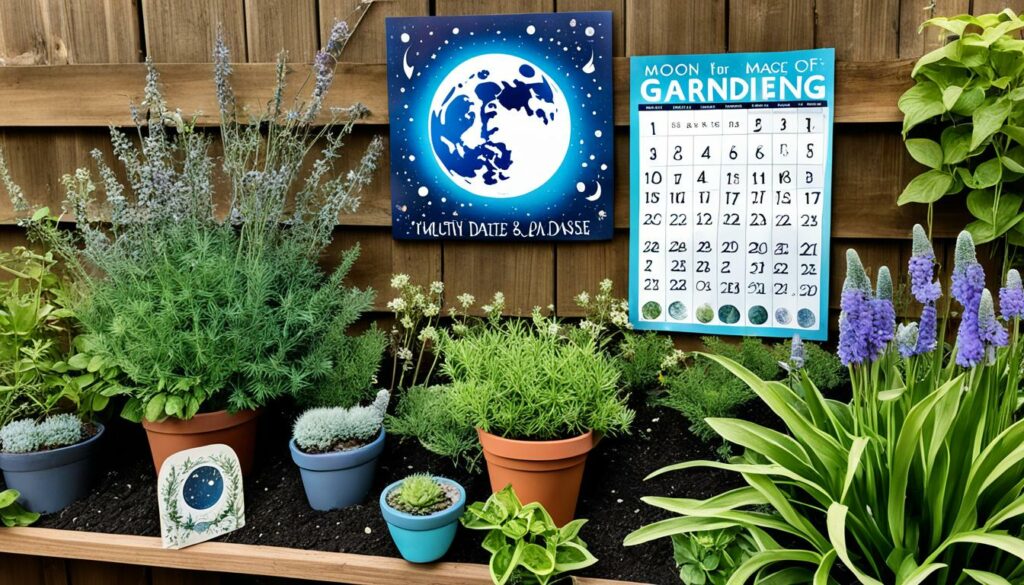
Full Moon: Harnessing Energy for Abundant Harvests
The Full Moon phase, with its peak luminosity and potent energy, is synonymous with planting for bounty. Root crops in particular benefit from the deeper moisture and gravitational effects at this time:
- Carrots
- Potatoes
- Beets
- Onions
Waning Moon: Focusing on Root Strength and Garden Maintenance
As the moon wanes, the light recedes and the pull on soil moisture diminishes, creating a perfect opportunity for garden maintenance and planting crops that do well with less energy:
- Radishes
- Turnips
- Garlic
- Perennials
For committed moon phase gardeners, a detailed lunar planting schedule assists in maximizing plant health and yields. Utilizing the celestial patterns aids not only in planting but also in ongoing garden care. Let’s look at a comparative gardening activities calendar aligned with lunar phases:
| Lunar Phase | Planting Activities | Garden Maintenance |
|---|---|---|
| New Moon | Sow seeds for leafy greens | Great time to start composting |
| Waxing Moon | Plant flowering and fruiting plants | Ideal for fertilizing gardens |
| Full Moon | Plant root vegetables and bulbs | Perform thorough watering |
| Waning Moon | Time to plant root-focused crops | Best for pruning and garden cleanup |
Aligning your garden activities with the lunar planting phases not only forges a connection with natural rhythms but potentially enhances your horticultural success.
Conclusion
The lore of moon gardening intertwines the ancient wisdom of agriculture with the poetic rhythms of the lunar cycle, offering a unique perspective on the relationship between the heavens and the tillable soil. At the heart of this practice lies a robust lunar planting schedule that guides enthusiasts in timing their planting and harvesting actions to the phases of the moon. Those who employ these methods are often captivated by the spiritual and holistic aspects it brings to conventional gardening, suggesting that even without empirical scientific backing, there’s merit in the observance of natural patterns.
Infused with the promise of a richer harvest and a deeper connection to the earth, lunar gardening tips provide gardeners with the opportunity to embark on an experiential exploration of their environment. This might be seen as a blend of hallowed tradition and curious exploration, where partaking in moon phase planting guides is not only about increasing yields but also about engaging with a practice that extends beyond the tangible—into the realm of connection and tradition.
Tapping into the lunar gardening zeitgeist, moon gardening is an invitation to individuals who seek synchronicity with the environment and aspire to cultivate their gardens under the watchful eyes of the celestial bodies. Though its principles may straddle the line between age-old lore and modern-day gardening innovation, adhering to the lunar planting schedule can be a rewarding endeavor. It transforms the act of gardening into an artful dance with nature’s own rhythms, potentially unlocking the mystery behind a bountiful and harmonious coexistence with the natural world.



